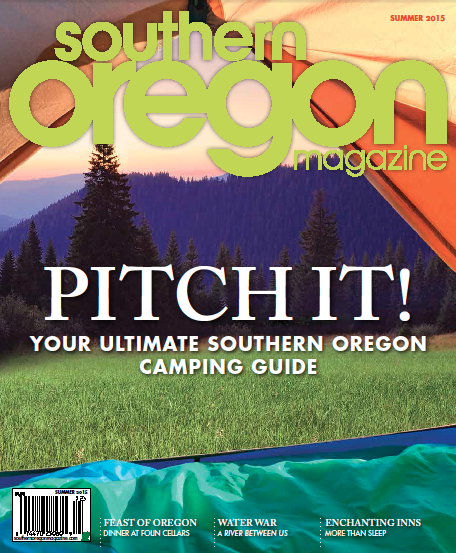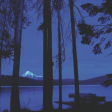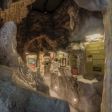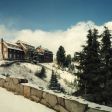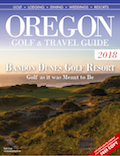

 Spring '24 Issue - Best Of Winners Announced & More
Spring '24 Issue - Best Of Winners Announced & More 
Tuesday, July 14, 2015
Tenting in the Old Campgrounds
Tenting In the Old Campgrounds
Get out there and enjoy the incredible beauty of Southern Oregon
Story by Lynn Leissler
Camping – verb. staying in a place usually away from urban areas where tents or simple buildings (such as cabins) are erected for shelter or for temporary residence.
“We are tenting tonight on the old camp ground. The fires are flickering low…” The haunting words to the 1863 song, “Tenting on the Old Camp Ground,” were sung by enlisted men in the Civil War. Over time, sleeping in a tent has become more a recreational pastime than a necessity or military bivouac. Today, we pitch tents to get away from it all, to enjoy time in nature. We’ve come to refer to our escape as going camping, and we use more than tents for shelter.
Sometimes, folks just lay a sleeping bag on the ground. Those who prefer luxury can go glamping (glamour camping). The concept, though not originally called by that name, has its roots in Empirical Britain’s campaigns and in the early 1900s safaris on which people carried actual furniture (designed to break down for easy portage—easy, that is, if you had servants) and rugs. But most of us in Southern Oregon don’t travel with paid staff or camels, although some pack in on horses. Glamping today is reserved for wilderness resorts in structures such as yurts, tipis, pods, bell tents, safari tents, tent cabins or treehouses. The resorts talked about here are typical Western-woods style—comfortable with a touch of the rustic.
Oregon is noted for its lakes, rivers, forests, and beaches, complete with designated camping areas. Southern Oregon has its fair share, and people come from all over to enjoy the region’s beauty and outdoor offerings. A friend who serves as a forest ranger shared information about the region and what he advises folks to ensure a safe adventure. I’ll call him The Ranger, representative of all the men and women dedicated to the faithful guardianship and oversight of our parks and wilderness areas. “The forests belong to the people, and what an incredible resource they are,” he says. “But it’s a finite resource.” He suggests a few guidelines: use the forest in a manner so that your great grandchildren will be able to use it; leave a campsite cleaner than you found it; stop by the ranger station to pick up maps, information and chat, or have a conversation with a field ranger should you come across one. Use real maps, for according to The Ranger, GPS devices often malfunction and mislead in the wilderness.
Some families camp for economy, others for sheer pleasure, spending weekends or vacations in tents, campers, fifth wheels and motorhomes. Many Oregon kids start camping before they’ve learned to walk. My mother, New York City born and bred, couldn’t abide the thought of sleeping anyplace but a bed, so I first experienced camping when I was eighteen, at the Oregon coast with a youth group. I crawled into the borrowed sleeping bag, slept under the stars, and loved it.
Where to go is often a big question. I found a book at the library, Pacific Northwest Camping 2014 by Tom Stienstra, which divides the Pacific Northwest into regions and notes what’s available at each location. Forest Service and State Park campsite information can be accessed online. Reservations are often required, and usually need to be made far ahead. Spur-of-the-moment outings limit your choices, but check online or in guidebooks for locations or out-of-the-way places where you can just drive in and set up camp.
Preparation is imperative. A first aid kit, maps of off-road areas, a full tank of gas, and adequate food and water all help make the experience pleasant—although I think of my sons in their teen years. They grabbed chips, cold cereal, sodas, cookies, hot dogs and a gallon of milk, then headed out with friends, sleeping bags and fishing gear, ignoring my motherly comments about nutrition. They survived, of course, and turned into seasoned outdoorsmen.
The other essential preparation is attitude. Enjoyment is the intention of a campout, but sometimes things don’t turn out as planned. Weather happens, bugs bite, temperatures fluctuate and kids get sick. Most upsets turn out fine in the end, fodder for family stories that grow larger with each telling—the bear actually reached inside your tent, the rain was a foot deep, etc. You don’t laugh at the time, not until later. When my young son and I cowered in our tent with metal stakes, surrounded by water from a torrential downpour and convinced the lightning flashing all around would strike and we’d be crispy critters, I wasn’t laughing. Now I relate the adventure with a smile.
Once you’ve decided your general destination, completed your research, prepared, packed ingredients for s’mores and roasted hot dogs, it’s time to head out. Along the Oregon coast, between Winchester Bay and the California border, there are more than two dozen camping opportunities. Harris Beach is quite popular for Rogue Valley residents, but reservations are a must. Talk about oceanfront lodging! The coast features fresh salt air, beach walks, shell and driftwood gathering, seafood, and interesting shops. More campgrounds can be found at nearby lakes or along rivers that feed into the ocean.
South, just off I-5, Emigrant Lake offers a view of the rolling terrain before the Siskiyou Pass into California. Its pavilion is perfect for events such as weddings or family gatherings. Nearby Ashland features unique shops, Shakespearean and other theaters. Hyatt Lake is also in the southern region, and offers traditional camping as well as a resort.
If rushing streams, waterfalls and deep forests beckon you, one response is to head east out of the Rogue Valley. Campgrounds dot Highways 62, 140, Dead Indian Memorial Highway, and service roads off the main highways. Some offshoot dirt roads are well maintained and suitable for a sedan, while others may require four-wheel drive. Maps and online sites provide that information. If you drive a motorhome, check whether the pads are long enough to accommodate your particular vehicle. If you like to ride horses, Fourmile Lake Campground, with access to the Sky Lakes Wilderness, offers horse-camping. History and camping come together in old guard stations such as Big Elk, Lodgepole, and Imnaha. These highly sought-after sites require reservations.
Weather and snowpack are always considerations at Crater Lake National Park, so more and more people are choosing to stay outside the park, then drive in. Farewell Bend is one choice, complete with a playground for the kids. Union Creek Campground sits in an old-growth forest along Highway 62 in the Union Creek Historic District. Also in the district is Union Creek Resort with historic cabins and lodge, and a store. Nearby eateries make it a popular stop for campers or those on their way elsewhere.
Some folks lash their bicycles to their vehicles when they head to the woods. Forest Service Road 37 between Highway 140 and Dead Indian Memorial Road is a paved favorite. There are good bike trails between Lake of the Woods and Fish Lake (which has camping, cabins and an early June fishing derby), as well as other trails in the region. Some are fine for a beach cruiser, others require the skill of a seasoned cyclist. Those wanting to hike a small slice of the Pacific Crest Trail (popular after the book and movie Wild), can trek a five-mile section south of Lake of the Woods.
The Klamath Falls region has much to offer those seeking outdoor getaways and adventure. Lake of the Woods has RV sites and cabins, a restaurant, live music and old movies, and rentable watercraft. Rocky Point Resort has tent and RV camping, as well as rustic cabins and guestrooms, and a restaurant serving lunch and dinner. If you want more comfortable amenities, Harriman Springs Resort and Marina offers luxurious mountain cabins, and patio boat rentals.
Rafting the Rogue River remains a key draw in Southern Oregon, offering adventure for both the cautious and those into high level thrills. Campgrounds along the Upper Rogue afford easy access to rafting, while it’s possible to stay overnight right next to the river in the Wild and Scenic section. Some folks throw a sleeping bag on a sandy beach, while others opt for one of the rustic, historic lodges along the way.
From Medford, you might take the back road toward Grants Pass into the Applegate Valley. Try Cantrall Buckley outside of Ruch, close to Jacksonville should you want to check out shops, history, wineries and the Britt Festival. Or head south to Applegate Lake and set up camp at Hart-Tish Park where wheelbarrows are provided to haul your gear. The lake has other campgrounds as well. Going north toward Grants Pass, Indian Mary is set in an area rich with history, and has tent sites, RV hookups, and two yurts. Wolf Creek Campground is near a section of the historic Applegate Trail.
For those who want to enjoy their camping and have their amenities, too, Out ‘n’ About Treehouse Treesort near Cave Junction might just be the ticket. Guests stay high above ground in treehouses accessed by a spiral staircase and swinging bridges. The resort offers horseback riding, swimming, and a zipline. Or, check online for the location of yurts, a unique way to camp. Many campgrounds feature rustic cabins or lodges, set lakeside or in the woods.
Continuing north, the Umpqua River area becomes another destination. Tyee Falls has campsites and a pavilion that overlooks the river and is large enough for a reunion or wedding. Susan Creek Campground, about 30 miles east of Roseburg along the Umpqua, offers first-come, first-served camping, as does Steamboat Falls. Millpond Recreation Site on Rock Creek is another possibility. Anytime a campground is along or near a river, check for some of Southern Oregon’s numerous lush and breathtaking forest-lined falls that cascade over mossy rocks.
For those traveling with children, prepare for the inevitable, “I’m bored.” Leave the electronics at home, and instead pack board games, sketch pads and coloring books. Guidebooks (Audubon Books has a great series) on trees, flowers, critters, birds, mushrooms, and more are wonderful ways to educate the kids—and yourselves. Take youngsters on age-appropriate hikes. If you can’t answer their questions, ask a field ranger if you come across one, or stop at the information station. Try singing around the campfire. Even teenagers feel less inhibited sitting in front of a fire making s’mores. They might even be up for a game of Scrabble. Summer nights in the woods allow opportunity to start traditions. The Internet offers numerous suggestions for activities.
Or, if you want to thrill the children, a unique camping experience awaits at Wildlife Safari—staying overnight inside the park. In the Roars and Snores Lion Adventure Camp, you camp at night where lions roam during the day. With Overnight Safari Adventure Camp, you sleep under the stars and in the morning participate in a unique carnivore-related activity. It’s a pretty sure thing the kids won’t say they’re bored.
The Ranger recommended safety precautions. Before you go, file a written travel plan with a responsible person. The plan should include: where you’re going; what route you’re taking; the make, model, color, and license plate number of your vehicle; how many people in your party; the color of your clothing; and when you plan to return home. If you decide to stay longer, get in touch with your contact person, which may mean driving out to get cell reception. Then, if you don’t show up, search and rescue has good information to help find you. If you get lost, stay in one place. A whistle is helpful, for it scares off animals but leads people to you.
The opportunities mentioned here are only a few out of hundreds. Maps are available at the various agencies—Forest Service, state, county, BLM. The Internet offers a wealth of information on camping in general and by region and site. Pick an area and research the specifics, such as whether the campground is open. Be on the lookout for special events at your selected site or in a nearby town. Then get out there and enjoy the incredible beauty of Southern Oregon. And as The Ranger says, “Be safe.”
SIDEBAR:
According to The Ranger, Ten (plus one) Essentials to Carry:
1. First aid kit
2. Extra food and water (plus water for your vehicle)
3. A way to stay warm and dry (a space blanket or even a plastic garbage bag will help keep you warm)
4. A map (GSP doesn’t work well in the piney woods)
5. Waterproof matches in a waterproof case
6. Fire starters (a candle, Vaseline-soaked cotton balls, steel wool—check online to see how it bursts into flame when fluffed and lit or daubed with a 9V battery)
7. 100 feet of parachute cord
8. Compass
9. Signaling equipment (some compasses have signaling features)
10. Pocket knife
11. Whistle
Online Resources:
Forest Service: www.fs.usda.gov/rogue-siskiyou
State Parks: www.oregonstateparks.org
BLM: www.blm.gov/or/districts/medford/recreation
Private Campgrounds: www.allstays.com/Campgrounds/Oregon-private-campgrounds-map.htm
Events & Promotions
Apr
26
Apr
27
Apr
28
Central Point
Charlee Prayers & The Double Dares play Rellik
Charlee Prayers & The Double Dares play Rellik
Apr
29
May
03
Gold Hill
Del Rio Vineyard Dinner in the Vineyard Spring edition OREGON FEAST
Let's celebrate Oregon Wine Month. Join us for an evening of wine ...



